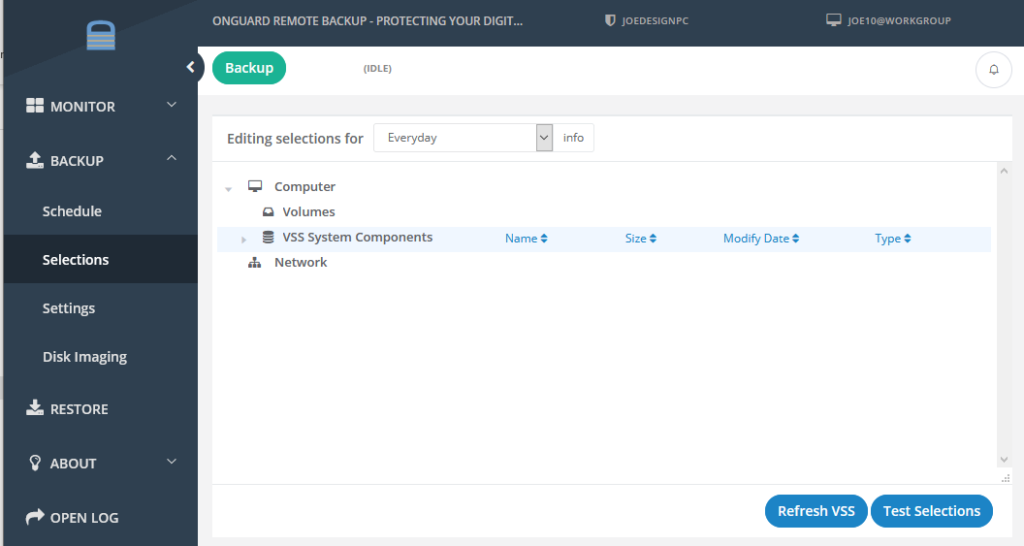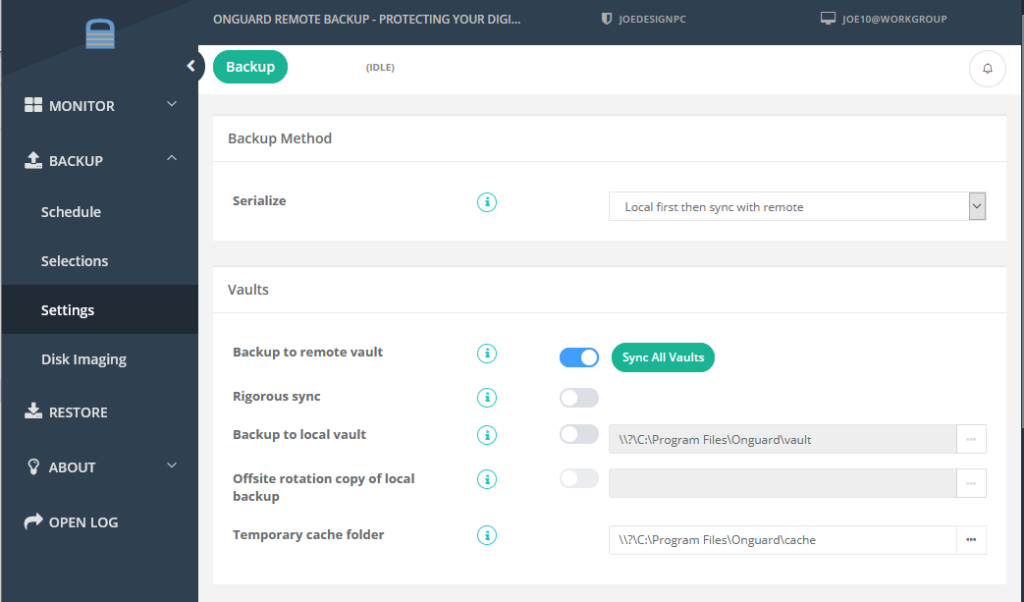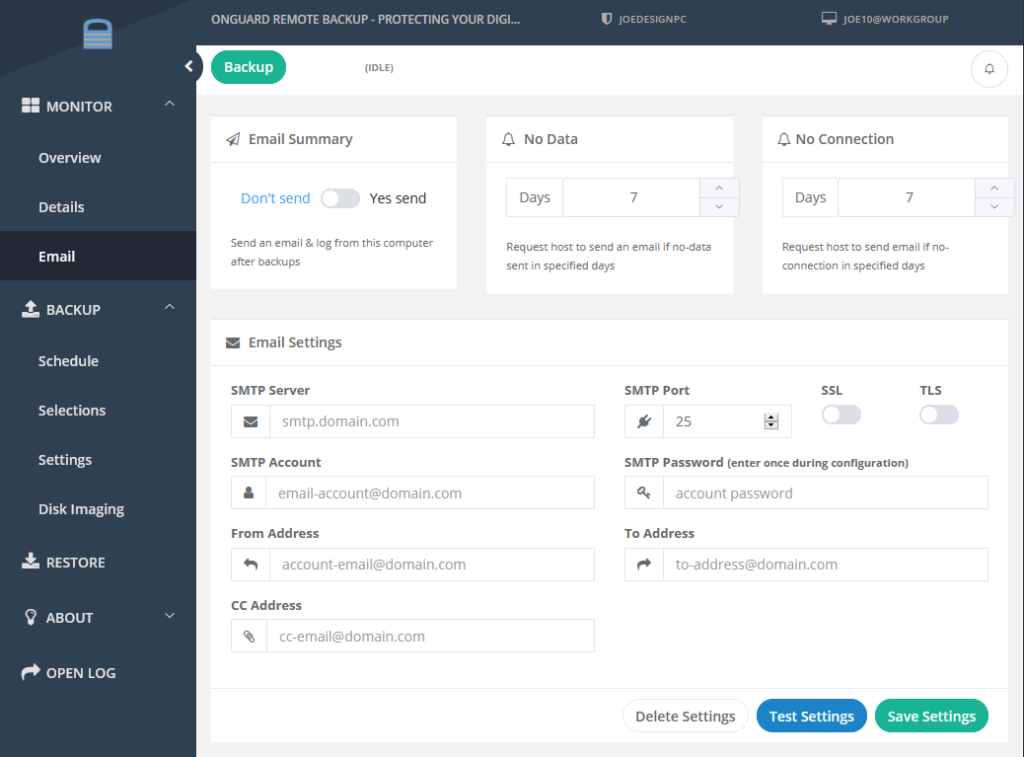
The Onguard Remote Backup software client can backup open files, and to do this utilizes Window’s Volume Shadow Copy Service, or VSS for short.
In most cases, VSS is able to take a snapshot of open files, which the Onguard Remote Backup client then uses to perform the scheduled backup. Some specific programs, such as the Exchange Server and SQL Server, provide special VSS Writers specifically for backing up their data files. These Writers allow VSS to include the associated data files into the snapshot, whether they are open or not.
Please note that some programs lock their open files in such a way that VSS is unable to snapshot the files. A major culprit for this type of program is QuickBooks, which locks down open .QB* files so that VSS cannot snapshot them.
In the case of programs and files such as these, the way to ensure that these files get backed up is to educate your end user that certain programs need to be closed at the end of the day so that their backup can run properly.
One other situation that may lead to open files not being backed up is if the files are on a network drive, be it a NAS or on another workstation. VSS is unable to perform snapshots on networked drives, so the Onguard Remote Backup software must access the networked files directly to back them up; if a networked file is in an open state that prevents other programs from accessing them, then the backup of that file will fail.
It is recommended that active files, especially those with VSS Writers, be backed up locally and not over a network drive. This will help ensure that these files are backed up properly, and will be usable when restoring data to a system.











